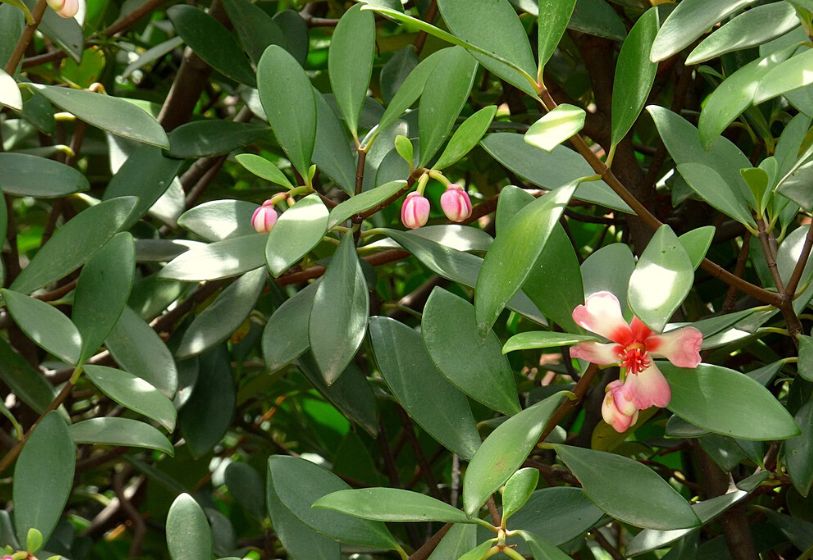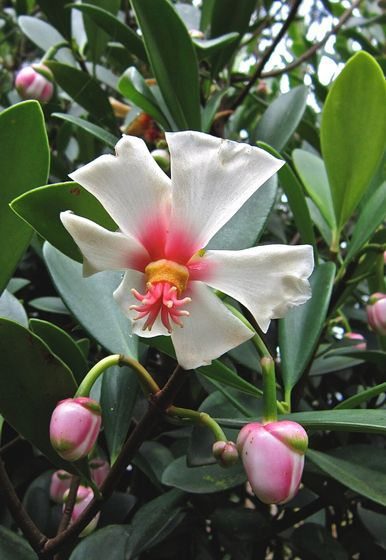Possibly originating from the eastern Boyacá mountain range in Colombia, the porcelain flower is a species with intriguing adaptive traits, capable of behaving as an epiphyte, climber, shrub, or tree. It typically grows between 4.9 and 11.8 feet, but can reach heights of up to 49.2 feet. With strong, woody branching extending from the base, it produces thick adventitious roots on its lower branches.
These roots often circumvent the pot rather than forming a compact mass, as they seek to touch the ground or find support. In its natural habitat, usually in mountainous regions at altitudes above 2625 feet, it may sprout from the ground or from forks in trees. If a nearby tree is present, it employs its roots to climb, behaving similarly to strangler figs (Ficus clusiifolia), which gradually suffocate and overtake the host plant.
Its crown is irregular and globular, dense with numerous simple leaves. These leaves are opposite, elliptical to lanceolate, coriaceous, and thick. The specific epithet orthoneura refers to the parallel secondary veins of the leaves. Visually, the leaves of Porcelain Clusia are narrower and more pliable than those of the Clusia (Clusia fluminsensis).
If wounded, the stem or leaves exude a white latex. It blooms throughout the year, producing flowers with 5 to 7 shiny, waxy petals in small quantities at the tips of its branches. The flowers exhibit a pink hue, with the center and edges displaying a deeper shade.

In gardens and decor, Porcelain Flower stands out for its ability to maintain its density and beauty in conditions of partial shade or filtered light. Consequently, this species can be employed as a hedge or beneath the shade of a moderately dense canopy.
Similarly, it can be potted indoors, provided it receives ample indirect light, such as from skylights, balconies, or sunny windows. Care must be exercised when planting this species near structures like walls, residences, or pools, as its unchecked growth can prove somewhat destructive.
Trivia: The wood of Clusia orthoneura is highly regarded for its quality, and boasting durability that makes it suitable for roof framing. The latex and resin extracted from its flowers possess healing medicinal properties and are traditionally used for wound sealing. The milky sap, when dehydrated, is also utilized as incense in churches.
It should be cultivated in partial shade or filtered light, in fertile, well-draining soil enriched with organic matter, and kept consistently moist. Its growth rate is slow, and it can be shaped through training or topiary. Porcelain Clusia is not tolerant of intense cold, frost, waterlogging, or extended drought periods. Regular watering is crucial in the first years of establishment, with reductions during cold winters.
Propagation is achieved through seeds or cuttings of preferably woody branches with adventitious roots. Seeds should be harvested from dry fruits and sown promptly, as storage diminishes their germination potency.


